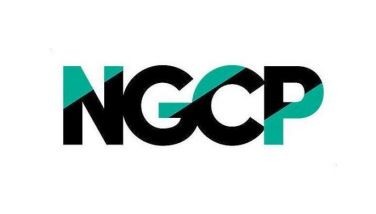Over 100 million of world's poorest benefit from microcredit
New York – More than 106 million of the world’s poorest families received a microloan in 2007, surpassing a goal set 10 years earlier, according to a report released today by the Microcredit Summit Campaign. Micro loans are used to help people living in extreme poverty start or expand a range of tiny businesses such as husking rice, selling tortillas, and delivering cell phone services to remote villages.
“This is a tremendous achievement that many people thought was far too difficult to reach,” said Nobel Peace Prize laureate and Grameen Bank founder Muhammad Yunus, who was present for the announcement. “What makes it even more remarkable is that loans to more than 100 million very poor families now touch the lives of more than half a billion family members around the world. That is half of the world’s poorest people.”
Organizers say that when the goal was originally set in 1997, fewer than eight million very poor clients had a micro loan. That number has grown by more than 1,300 percent between 1997 and 2007. In 2007, micro loans went to 88 million very poor women.
The Microcredit Summit Campaign counts the world’s poorest as those who live in the bottom half of those living below their nation’s poverty line, or any of the nearly one billion people living on less than $1 a day.
At the first Microcredit Summit in 1997, then-US First Lady and current US Secretary of State Hillary Clinton said, “I am thrilled to see such a turnout for this summit which is one of the most important gatherings that we could have anywhere in our world. And this first global summit on micro credit offers an unprecedented opportunity for us to draw attention to the successes of micro credit in developing countries, as well as in applications in advanced economies around the world.”
“The Campaign spent less than $12 million during the period 1997-2007, while the amount of micro loans in the hands of the poor has expanded from an estimated $1 billion to $15 billion, demonstrating the significant leverage possible when an international campaign is able to mobilize millions of people and institutions on a global scale,” said Alex Counts, president and CEO of Grameen Foundation.
While the first micro loans in the developing world were made in the 1970s, for decades, this quiet revolution gained ground largely unnoticed by world leaders and development specialists. The year after the 1997 Microcredit Summit, the United Nations declared 2005 as the Year of Microcredit. In 2006 Muhammad Yunus and Grameen Bank received the Nobel Peace Prize.
While the world’s financial markets are gripped by a global economic crisis, this quiet revolution in micro banking has spread to the most destitute corners of the world. “Micro credit is one of the most effective ways to help the poor find a dignified route out of poverty,” said Microcredit Summit Campaign director Sam Daley-Harris, “and it does so with payback rates that traditional banks would envy.”
TSPI Development Corp. a pioneer in microfinance in the Philippines, started financing 20 projects in 1980. These projects, worth $43,000, gave employment to 94 poor Filipinos.
As of December 2008, TSPI’s client outreach has grown to 328,965 members, impacting the lives of more than 1.3 million poor Filipinos.
Over the years, TSPI has adopted a wholistic approach to help eradicate poverty as its lifetime mission. More than micro-credit to finance livelihood opportunities, TSPI engages in programs, products, projects and services that include delivering the poor from the clutches of social injustice. Housing, legal assistance, health care, education, sanitation particularly improvement of toilets, and micro-insurance have become part of TSPI’s strategy to directly address poverty.
Of 328,965 members, 200,000 availed themselves of micro loans to finance start-up or existing livelihood, including financing of high-risk loans such as livestock raising and rice farming. About 128,965 of these members availed themselves of micro-insurance services that indemnify their families of a financial assistance in case of death, accident and the risk of business failures.
From $43,000 in 1980, total value of loans released to borrowers in the first six months of 2008 amounted to $37 million, or an average loan size of $185 per borrower.
The Microcredit Summit Campaign is a project of the RESULTS Educational Fund, a US-based grassroots advocacy organization committed to ending hunger and poverty. The Campaign brings together micro credit practitioners, advocates, educational institutions, donor agencies, international financial institutions, non-government organizations and others involved with micro finance to promote best practices in the field, stimulate the interchanging of knowledge, and work towards reaching bold measurable goals.
- Latest
- Trending
























